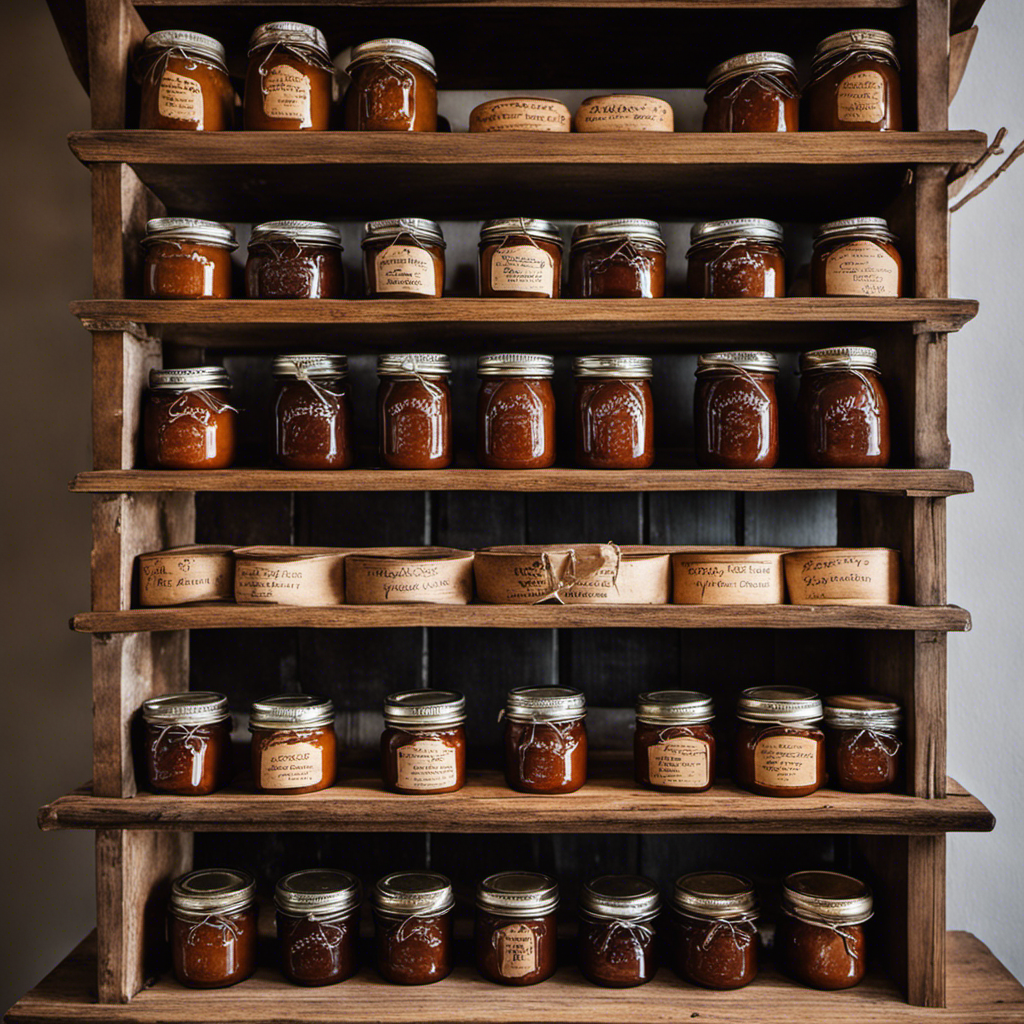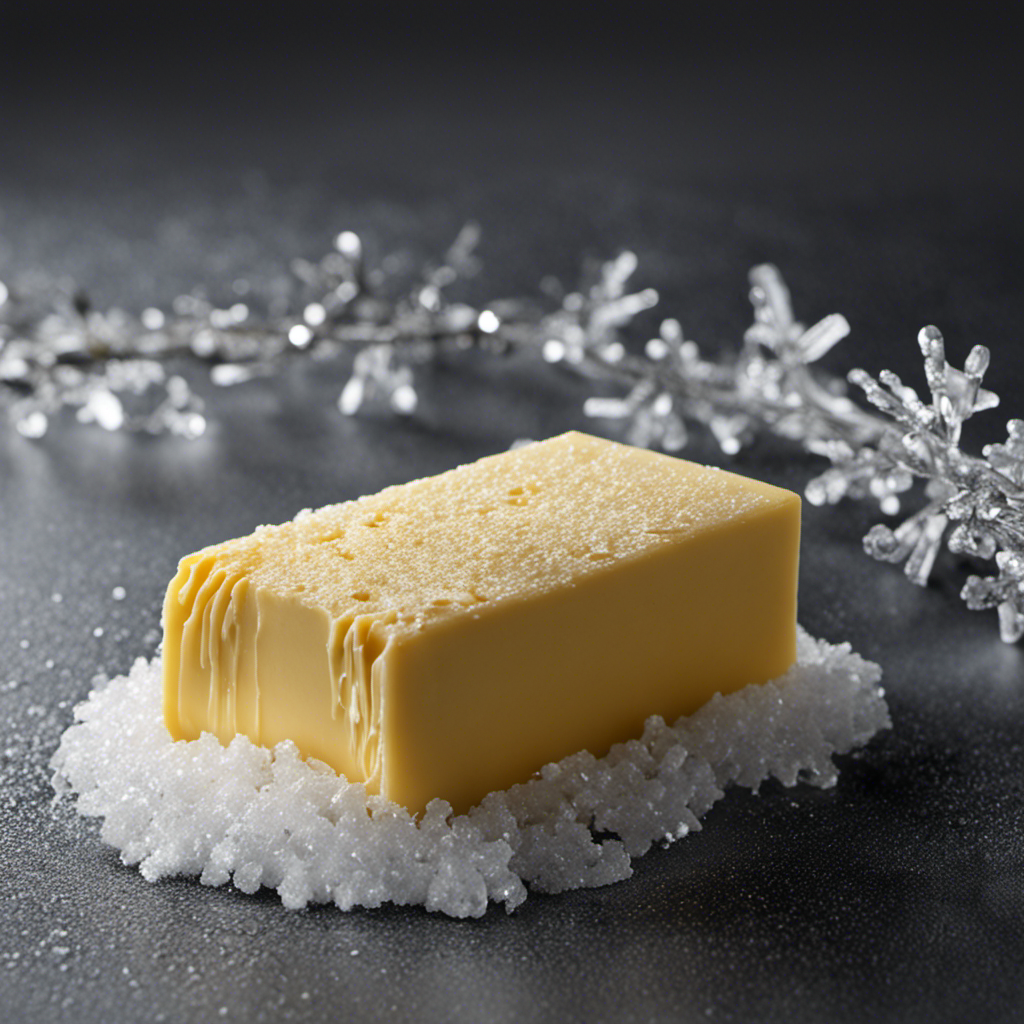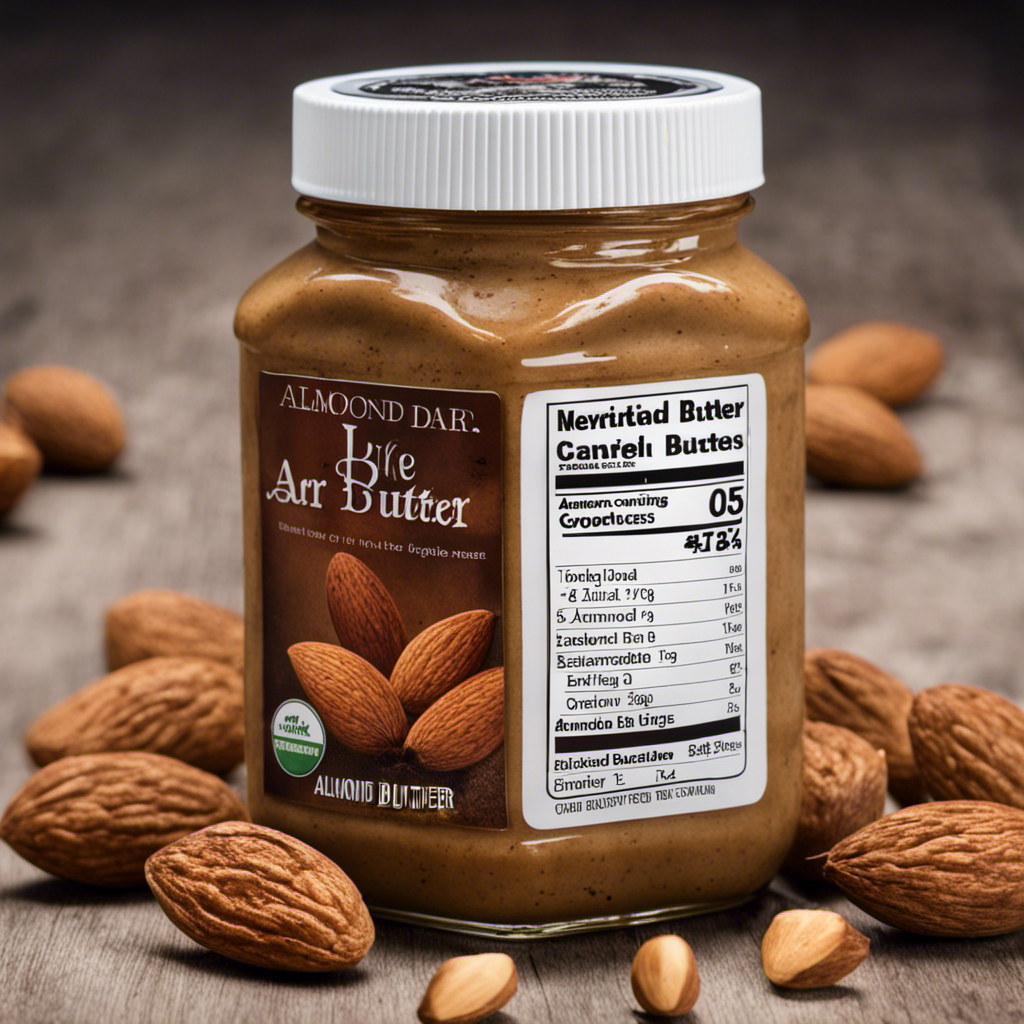As a fan of everything apple, I am constantly searching for ways to preserve and savor the delightful flavors of this adaptable fruit. One of my preferred methods to enjoy the taste of apples throughout the year is by indulging in canned apple butter.
But how long does this delectable spread actually last? In this article, I will explore the shelf life of canned apple butter, factors that affect its longevity, proper storage methods, signs of spoilage, and tips for extending its shelf life.
So grab a slice of toast and let’s dive into the world of canned apple butter!
Key Takeaways
- Canned apple butter can last up to one year when properly stored.
- Factors such as temperature, moisture, and light can affect the shelf life of canned apple butter.
- Proper storage techniques, including keeping it in a cool, dry place and ensuring jars are properly sealed, greatly affect the shelf life.
- Signs of spoiled canned apple butter include unpleasant odor, mold growth, and changes in appearance, and consuming spoiled apple butter can pose health risks.
Shelf Life of Canned Apple Butter
You’ll want to know how long your canned apple butter will last on the shelf.
The shelf life of canned apple butter can vary depending on several factors. When properly stored, canned apple butter can last for up to one year. It is important to ensure that the jars are properly sealed and stored in a cool, dark place.
This will help to preserve the quality and taste of the apple butter for a longer period of time. Additionally, it is recommended to check the jars for any signs of spoilage before consuming. If you notice any bulging lids, strange odors, or mold growth, it is best to discard the apple butter.
Factors Affecting the Shelf Life of Canned Apple Butter
Factors such as storage conditions and proper sealing greatly affect the shelf life of canned apple butter. To ensure the optimal preservation of this delicious spread, here are three key factors to consider:
-
Temperature: Keeping canned apple butter in a cool, dry place is crucial. Exposure to heat can lead to spoilage and a shortened shelf life. Aim for temperatures between 50-70°F (10-21°C) for the best results.
-
Moisture: Moisture is the enemy when it comes to preserving canned apple butter. Make sure the jars are properly sealed to prevent any moisture from entering. Avoid storing them in humid areas or near water sources.
-
Light: Exposure to light can cause the apple butter to degrade and lose its flavor. Store the jars in a dark place to maintain the quality and extend the shelf life.
Proper Storage of Canned Apple Butter
When it comes to the shelf life of apple butter, there are a few key factors to consider. Proper storage is essential in maintaining the quality and safety of this delicious spread.
In this discussion, I will explore the factors that affect the shelf life of apple butter and provide valuable tips on how to store it safely.
Shelf Life of Apple Butter
The shelf life of canned apple butter is typically around one year. To ensure that your apple butter stays fresh for as long as possible, it’s important to follow proper canning techniques and shelf life preservation methods.
Here are three key tips to help you maximize the shelf life of your canned apple butter:
-
Choose the right canning method: Opt for a hot water bath canning method when preserving apple butter. This method involves submerging the jars in boiling water to create a seal, which helps to prevent bacteria growth and extends the shelf life.
-
Properly sterilize the jars: Before filling the jars with apple butter, make sure to sterilize them thoroughly. This can be done by boiling the jars and lids in water for a few minutes. Sterilization helps to eliminate any potential bacteria that could spoil the apple butter.
-
Store in a cool, dark place: After canning, store the jars in a cool, dark place, such as a pantry or cellar. Exposure to heat and sunlight can accelerate the degradation of the apple butter, reducing its shelf life.
Storing Apple Butter Safely
To keep your homemade apple butter safe for consumption, it’s crucial to store it in a cool, dark place. Proper storage is essential for preserving apple butter and ensuring its quality and taste. Here are some guidelines for storing homemade apple butter:
| Storage Tips | Description |
|---|---|
| Temperature | Store apple butter at a consistent temperature between 50-70°F (10-21°C). Avoid extreme heat or cold, as it can affect the quality and shelf life. |
| Light | Keep apple butter away from direct sunlight or bright artificial light. Exposure to light can cause oxidation and spoilage. |
| Moisture | Moisture is the enemy of preserving apple butter. Make sure the containers are tightly sealed and free from any moisture to prevent mold or bacterial growth. |
| Air | Air can cause oxidation and deteriorate the quality of apple butter. Use airtight containers or jars with proper seals to minimize air exposure. |
| Shelf Life | When stored properly, homemade apple butter can last up to one year in a cool, dark place. Check for signs of spoilage before consuming. |
Signs of Spoiled Canned Apple Butter
You can tell if your canned apple butter has spoiled by checking for any unusual smells or signs of mold. Here are three signs that your apple butter may have gone bad:
-
Unpleasant odor: If you open the jar and notice a foul or sour smell, it’s a clear indication that the apple butter has spoiled. Fresh apple butter should have a sweet, fragrant aroma.
-
Mold growth: Inspect the surface of the apple butter for any signs of mold. Mold can appear as fuzzy patches or greenish spots. If you see any, it’s best to discard the entire jar.
-
Change in appearance: Spoiled apple butter may develop an off-color or separation of ingredients. If the butter looks discolored or has a watery layer on top, it’s a sign that it has deteriorated.
Extending the Shelf Life of Canned Apple Butter
Now that we know how to identify signs of spoiled canned apple butter, let’s talk about how we can extend its shelf life and preserve its flavor.
To keep your canned apple butter fresh for a longer period, it’s important to store it properly. The ideal storage temperature for canned apple butter is between 50 and 70 degrees Fahrenheit, in a cool and dark pantry or cupboard. Avoid exposing it to direct sunlight or extreme temperatures, as this can degrade its quality.
Additionally, make sure to always use clean utensils when scooping out the apple butter to prevent contamination.
By following these simple steps, you can maximize the freshness and flavor of your canned apple butter.
Now that we know how to prolong its shelf life, let’s move on to the next section and discuss the safety precautions for consuming canned apple butter.
Safety Precautions for Consuming Canned Apple Butter
If you’re unsure about the safety of consuming canned apple butter, it’s important to check for any signs of spoilage before consuming it. Here are some safety guidelines to follow to ensure your canned apple butter is safe to eat:
-
Check for bulging or dented lids: If the lid is bulging or dented, it might be a sign of bacterial contamination. In this case, it’s best to discard the apple butter.
-
Inspect for mold or off-putting odor: If you notice any mold growth or a strange smell coming from the jar, it’s a clear indication that the apple butter has spoiled and should not be consumed.
-
Examine the color and texture: Fresh apple butter should have a smooth, consistent texture and a vibrant color. If it appears watery, clumpy, or has changed in color, it’s best to err on the side of caution and discard it.
Consuming spoiled apple butter can pose health risks, such as food poisoning. It’s always better to be safe than sorry when it comes to the safety of your food.
Frequently Asked Questions
Can I Freeze Canned Apple Butter to Extend Its Shelf Life?
Yes, you can freeze canned apple butter to extend its shelf life. Freezing is a great way to preserve apple butter, as it can be stored for up to a year in the freezer.
Can I Store Canned Apple Butter in the Refrigerator Instead of a Pantry?
Yes, you can store canned apple butter in the refrigerator to extend its shelf life. It’s a great option for preserving apple butter without a pantry, ensuring it stays fresh and delicious for longer.
Is It Safe to Consume Canned Apple Butter That Has Passed Its Expiration Date?
Consuming expired canned apple butter is not recommended for safety reasons. However, there are alternatives like freezing or making your own fresh apple butter. Apple butter itself is rich in nutrients and antioxidants, making it a healthy choice.
How Long Does Homemade Canned Apple Butter Last Compared to Store-Bought Ones?
Homemade canned apple butter lasts longer than store-bought ones. The benefits of homemade apple butter include controlling ingredients and flavors. It’s a rewarding and delicious way to enjoy apple butter.
Can I Reuse the Jars Used for Canned Apple Butter to Store Other Food Items?
Sure, I can reuse the jars for other food items, but it’s important to store canned apple butter properly to ensure its longevity. Follow proper storage guidelines and enjoy your homemade goodness!
Conclusion
In conclusion, it is important to know the shelf life of canned apple butter. This ensures its safety and quality. On average, canned apple butter can last up to 1 year when stored properly.
Interestingly, a study conducted by the National Center for Home Food Preservation found that apple butter made with a higher sugar content tends to have a longer shelf life. This is compared to those with less sugar. Therefore, it is recommended to use recipes that include a higher sugar concentration for extended storage.
By following proper storage techniques and paying attention to signs of spoilage, you can enjoy your homemade canned apple butter for a longer period of time.










